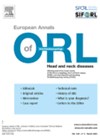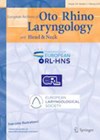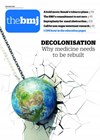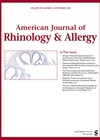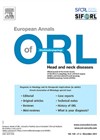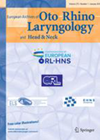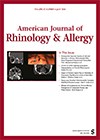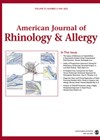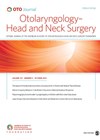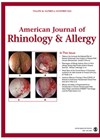
Journal Reviews
Septoplasty revisited
Septoplasty is one of the commonest rhinological surgeries performed. With the advent of minimally invasive surgical concepts, endoscopic targeted septoplasty was introduced. This study aimed to compare the complications and outcomes between endoscopic septoplasty and conventional septoplasty by a PRISMA...
Organoids in otolaryngology
This interesting review article summarises the status as well as future prospects of organoid technology in our field. Organoids are a mass of cells which are typically cultured in vitro with 3D technology. They simulate miniature tissues and organs and...
Nasal septoplasty: is it more effective than medical management?
Question1. How do we know that undertaking an operation will benefit a patient? Question 2. How do policy makers / health systems know an operation is effective and ‘good value for money’? As trained professionals, we spend our careers seeking...
A new treatment for smell loss?
It has been well established that smell training can be effective in the recovery of smell function post Covid-19 infection, and many other treatment modalities have been assessed. There have been limited studies to date evaluating the effects of dietary...
Still not smelling
Post-Covid anosmia/hyposmia is a troublesome persistent symptom for lots of patients. Management is still elusive. This was a nationwide survey of ENT practitioners. Of the 715 surveyed members, only 7.4% responded. Most performed a nasal endoscopy, 60% ordered an MRI...
Evolution of salivary gland pathology classifications
Targeted therapies for malignant salivary gland tumours have changed the treatment paradigm and therapy approaches. Better outcomes are now feasible. Choosing the treatment method requires a clear classification of the lesions. The authors of this paper reviewed the World Health...
A new treatment for chronic rhinitis
The review paper looks at the efficacy of cryoablation of the posterior nasal nerve (PNN) to treat chronic rhinitis, an increasingly popular method of treating a highly prevalent and morbidity-inducing disease. Five studies were included in the meta-analysis, all dating...
More aggressive FESS for recalcitrant CRS is the key
This is an interesting paper assessing the effectiveness of endoscopic modified medial maxillectomy (MMM) in cases of recalcitrant chronic rhinosinusitis (CRS), (the technique was also used for tumours, cystic fibrosis, FB, odontogenic disease and AFS) in 551 patients. The technique...
ChatGPT Quiz skills need refinement!
On 30 November 2022, ChatGPT was launched, free for all to use online. For those who are not aware, ChatGPT (Chat Generative Pre-trained Transformer) is an artificial intelligence (AI) chatbot which utilises the web to create detailed and natural human-like...
Do adhesions actually cause nasal blockage?
All of us who perform nasal surgery are familiar with the disappointing presence of nasal adhesions (NA) or synechiae in our postop patients. These can often lead to patients deriving less perceived benefit from their surgery than that which they...
Does middle turbinate resection affect olfaction in endoscopic transsphenoidal surgery?
The middle turbinates (MT) are sometimes partially resected during endoscopic transnasal transsphenoidal pituitary surgery to improve surgical access. Some outfracture the middle turbinates instead. This article presents results of the first prospective randomised study, investigating the effects of such surgery...
The future of biologics?
This paper takes a deep dive into how eosinophilia affects the responsiveness of the host to the two monoclonal antibodies mepolizumab and bendralizumab, both of which are active against IL5. We know that eosinophils are attracted and trapped into the...

